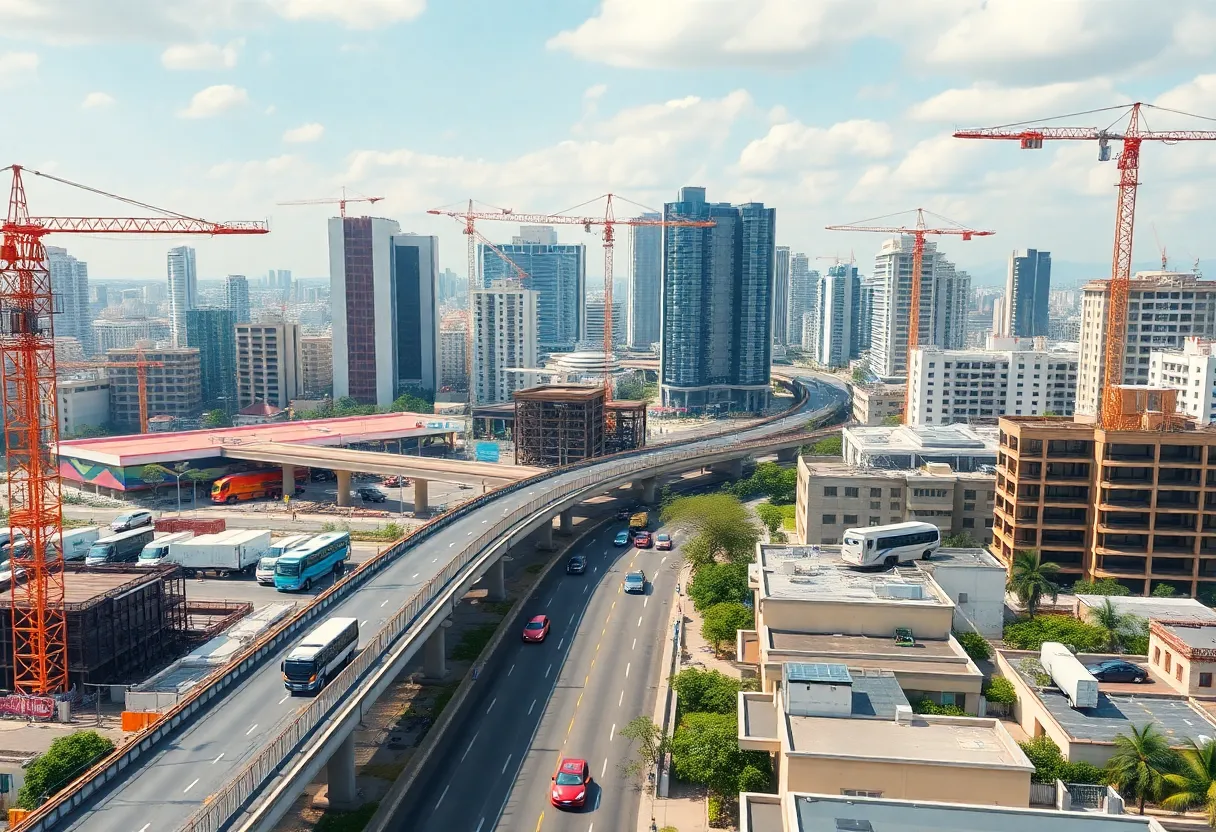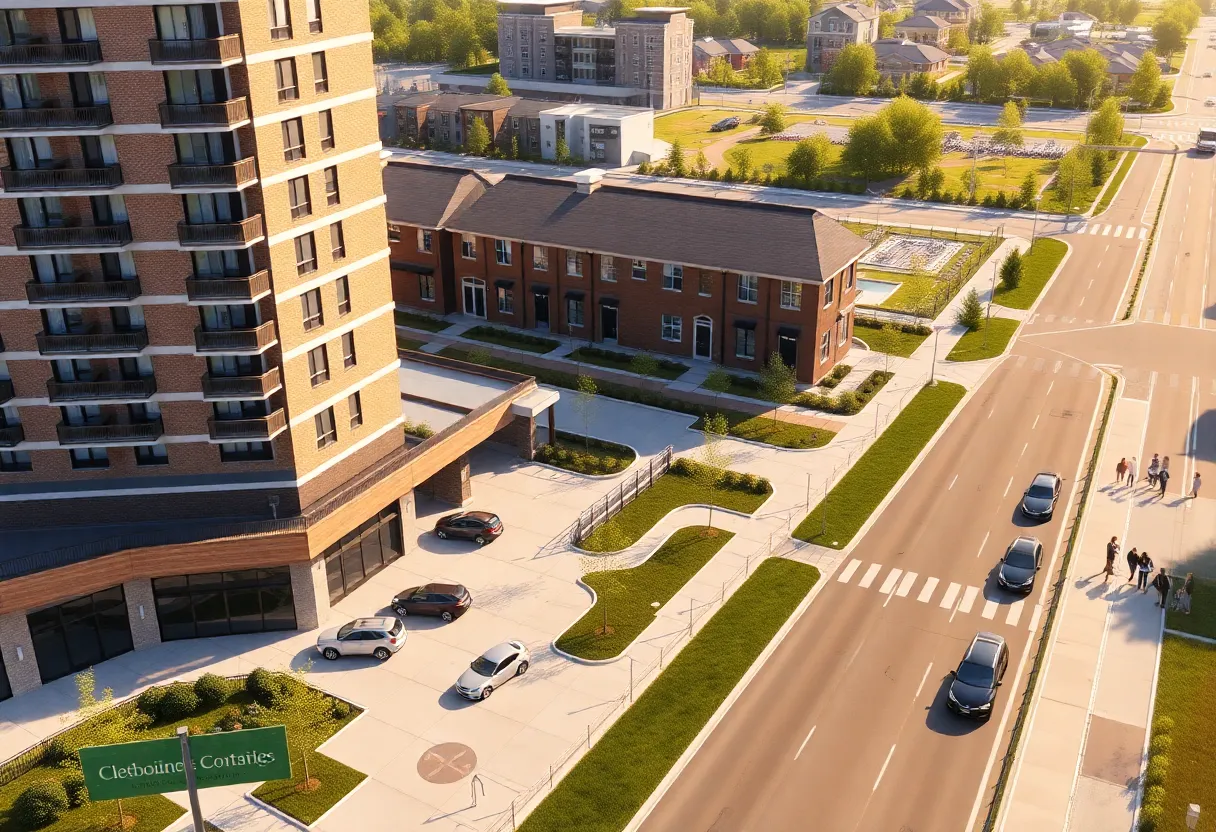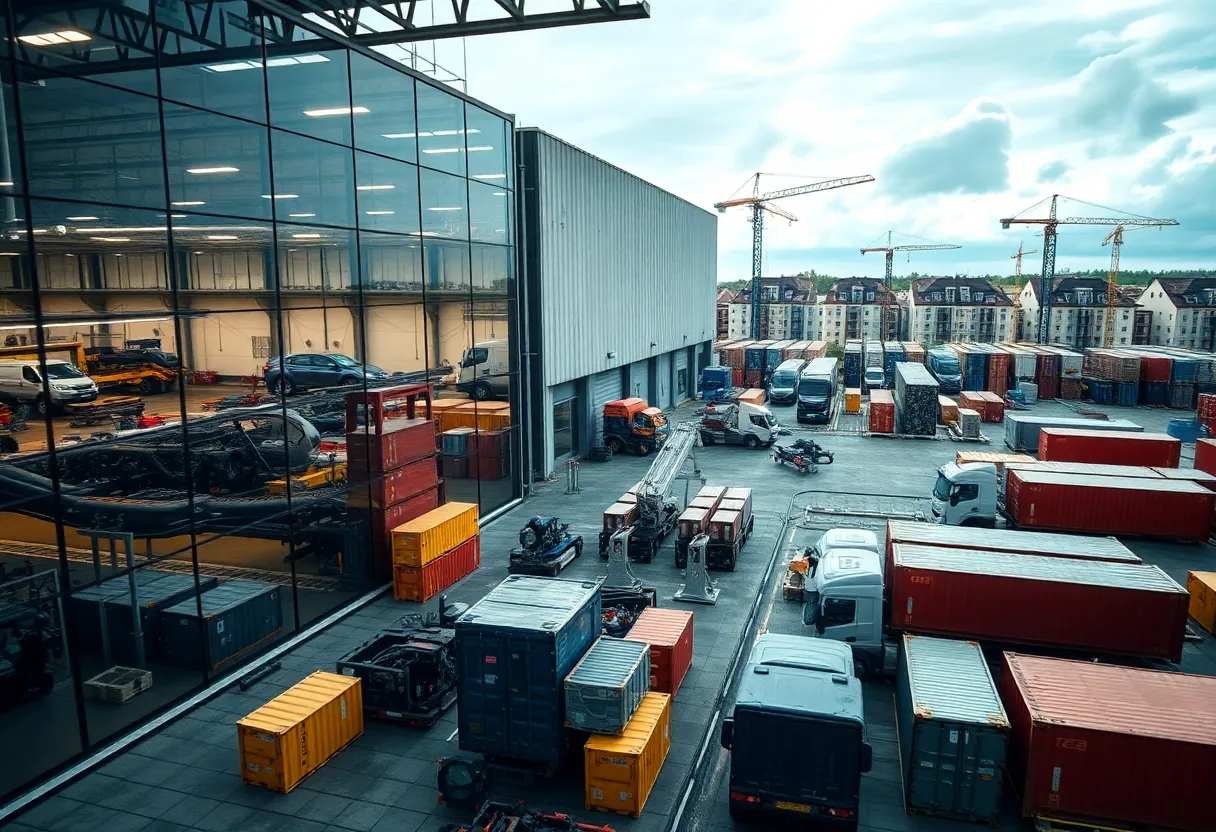Latin America, September 8, 2025
News Summary
Two recent studies present conflicting size and growth estimates for the Latin America construction market but agree on core dynamics: robust urban and infrastructure demand, large public investment programs and expanding PPPs, cost and logistics pressures, a widening skills gap, heightened climate risks, and increased focus on sustainability and digital tools like BIM and digital twins. Brazil leads regional share while housing shortfalls and major transport and smart‑city projects drive activity across countries. Success will depend on managing materials and logistics costs, closing workforce gaps, strengthening climate resilience, and accelerating planning and digital adoption.
Latin America Construction Market Faces Divergent Forecasts but Shared Growth Themes
The latest studies on Latin America’s construction sector present two divergent forecasts for the 2024–2034 window while highlighting a set of shared growth themes that could shape activity for years to come. Across the reports, the region is described as buoyed by urban expansion, major infrastructure plans, and an uptick in public‑private partnerships, even as firms confront cost pressures, skills shortages, and climate‑related risks. A broad push toward sustainability and digitalization is also a common thread that could redefine how projects are planned and executed.
Divergent forecasts on market size, with a few shared numeric anchors
One forecast places the 2024 market at USD 1.07 billion, expects USD 1.13 billion in 2025, and projects a peak near USD 1.64 billion by 2033, with a CAGR of 5.16% for 2025–2033. In the same source, a separate Forecast Metric section lists a alternative CAGR of 2.61%, underscoring the variability that accompanies market modeling. A second forecast presents a different scale altogether, stating the Latin America construction market reached approximately USD 9.11 billion in 2024, with a CAGR of 4.20% from 2025 to 2034 and a projected value of USD 13.75 billion by 2034. An FAQ embedded in the materials envisions about USD 1.13 billion in 2025 and suggests a growth rate near 5% per year through 2030.
Urbanization, housing and social housing under pressure
Urban growth is a central driver, with over 400 million people living in cities across the region and urban dwellers expected to top 500 million by 2030. Across Latin America, about 81% of the population now resides in cities. Country‑level housing dynamics show persistent gaps: in Colombia, nearly 27% of urban households live in informal settlements, while in Mexico and Colombia, more than 25% of residents live in substandard housing. Mexico’s housing agency INFONAVIT finances more than 500,000 homes annually, underscoring ongoing social housing activity.
Public investment, PPPs and major planned spend
Public investment remains a headline driver. Colombia’s National Infrastructure Agency targets a road and rail program worth COP 110 trillion (roughly USD 27 billion) by 2026. Governments across the region are expected to mobilize around USD 2.2 trillion for construction and maintenance of key projects in energy, sanitation, logistics and housing. In 2023, lenders committed more than USD 22 billion in loans and grants to public construction projects. A public–private partnership (PPP) model is highlighted as an emerging mechanism to close funding gaps for roads, railways and mass transit. Peru reported a 19% year‑over‑year rise in public construction investment in 2023, described as the strongest growth in a decade.
Country and regional market shares / notable items
Brazil accounted for about 34.3% of the regional construction market in 2024. The country’s federal PAC 2023–2026 program unlocked roughly BRL 1.5 trillion for highways, railways and sanitation, with 87 major projects in execution by mid‑2024. Logistics indicators in major cities show vacancy rates for logistics warehouses falling to 4.1%, the lowest in a decade. On the northern border of Mexico, states like Querétaro and Nuevo León posted a 31% rise in industrial construction permits in 2023. In Brazil, two large‑scale contractors together secured about 38% of federal infrastructure contracts awarded in 2023. An example in other markets notes cross‑border collaboration on urban development, such as a major smart city initiative near an international airport in Guyana.
Market segments, shares and projections
Within the market, the building construction segment held the largest share in 2024 at 58.3%. The land planning and development segment is projected to grow faster than average, with a CAGR around 7.4%. The private sector led the market share in 2024, while the public sector is expected to grow at a 6.8% CAGR over the forecast period. Large contractors controlled around 54.3% of market share in 2024, with small contractors projected to expand at about 8.1% CAGR in the coming years.
Drivers of growth and the sustainability push
Growth is driven by urban population expansion outpacing housing supply, and by national infrastructure modernization programs. Environmental awareness and tightening climate policies are described as accelerants. The green building trend is highlighted, with the Pan American Health Organization suggesting green buildings can cut energy use by up to 40% and water use by about 30% in regions with scarce resources. Colombia’s energy efficiency standards for public buildings are already in law, and there is growing uptake of eco‑friendly materials like wood and the development of smart‑city projects. A notable example highlights 319 GW of renewable energy plants planned over the next seven years, a driver for near‑term construction activity.
Efficiency, planning and cost mitigation
Efforts to curb costs emphasize better pre‑construction planning: the IDB notes that every USD 1 invested in land planning before construction can reduce total project costs by 12–18% via risk mitigation. Digital platforms are being used to empower small contractors with procurement networks and project management tools, contributing to tighter schedules and improved oversight.
Technology, methods and sustainability initiatives
Market players are pursuing PPPs, Building Information Modeling (BIM) and digital twins, strategic alliances with international engineering firms, workforce upskilling and safety training, and ESG integration including green certifications and low‑emission construction practices. Smart city and biophilic design concepts appear in plan examples, with intelligent technologies such as AI and IoT beginning to shape planning, design and construction workflows.
Competition, arbitration, and project risk
The procurement and dispute landscape shows arbitration increasingly used to resolve complex construction disputes in several countries. While international arbitration has a significant footprint, many smaller, domestically funded disputes are handled locally and can present procedural challenges. Common causes of disputes include project delays, disruptions and cost overruns, often amplified by social protests or community concerns. The industry is encouraged to adopt robust contract drafting, early dispute resolution mechanisms, and comprehensive project records to mitigate risk. Notable mega projects in the region have generated substantial international arbitration activity across multiple institutions.
Note on sources and structure
The two recent market studies present different baselines and growth trajectories for the 2024–2034 period, yet converge on a set of structural themes: rapid urban growth, large‑scale infrastructure investments, financing via PPPs and international lenders, cost and logistics pressures, and a push toward digitalization and greener building practices. The numbers vary, but the underlying story remains one of an region at a crossroads between substantial opportunity and the need to manage risk and resilience in a changing climate.
Frequently asked questions
Q1: What is the overall outlook for the Latin America construction market according to the two reports?
A1: The forecasts diverge on exact market size but agree on rising urban and infrastructure demand, greater investment and PPP activity, cost pressures, labor shortages, climate risk, and a stronger focus on sustainability and digitalization.
Q2: Which factors are driving growth in the region?
A2: Growth is driven by urban population expansion, modernization of infrastructure, and policy support for sustainability. Green building adoption, energy efficiency standards, and smart‑city initiatives also play key roles.
Q3: What are the main risks and challenges facing projects?
A3: Risks include volatile material costs and logistics), permitting delays, zoning disputes, tax and land‑use policy uncertainty, a skilled‑labor shortage, a high share of informal workers, and exposure to natural hazards. Climate resilience codes are not universal across all countries.
Q4: How are public investment and PPPs shaping the market?
A4: Governments are planning and funding large infrastructure programs, often using PPPs to bridge funding gaps for roads, railways and mass transit. International lenders continue to provide substantial support for public construction projects.
Q5: Are there notable regional or country trends?
A5: Brazil held a large regional share in 2024, with plans that unlocked significant funds for transport and sanitation. Industrial growth is evident on the Mexican border, and public investment in Peru showed notable year‑over‑year gains. Across the region, urban housing demand and social housing programs remain central to activity.
Key features at a glance
| Feature | Details |
|---|---|
| Forecast divergence | Two separate market size forecasts for 2024–2034 with different CAGR figures (5.16% vs 2.61%), plus an alternative 2024 size of USD 9.11B and 2034 projection to USD 13.75B in another view. |
| Urbanization and housing | Large urban population base, with high informal housing shares in some countries; social housing programs are a steady driver. |
| Public investment and PPPs | Large planned investment in road, rail, energy and sanitation; PPPs highlighted as a key mechanism to mobilize funding. |
| Regional drivers | Brazil’s market share and infrastructure program; industrial growth in northern Mexico; rising renewable energy project pipelines. |
| Risks and constraints | Cost volatility, logistics costs higher than other regions, regulatory fragmentation, zoning conflicts, and skilled-labor shortages. |
| Technology and sustainability | BIM, digital twins, and AI adoption; green certifications and low‑emission methods; biophilic and smart‑city concepts emerging. |
| Arbitration and procurement | Growing role of arbitration in resolving disputes; domestic vs international arbitration dynamics; large megaprojects drive dispute volumes. |
Deeper Dive: News & Info About This Topic
Additional Resources
- Market Data Forecast: Latin America Construction Market
- Wikipedia: Construction in Latin America
- GlobeNewswire: Latin America Construction Industry Report 2025
- Google Search: Latin America construction industry report 2025
- BizWire / ResearchAndMarkets: Latin America Construction Chemicals Market
- Google Scholar: Latin America construction chemicals market
- JLL: Latin America Construction Overview
- Encyclopaedia Britannica: Latin America construction
- LatinLawyer: Arbitrating construction disputes in Latin America
- Google News: construction arbitration Latin America





